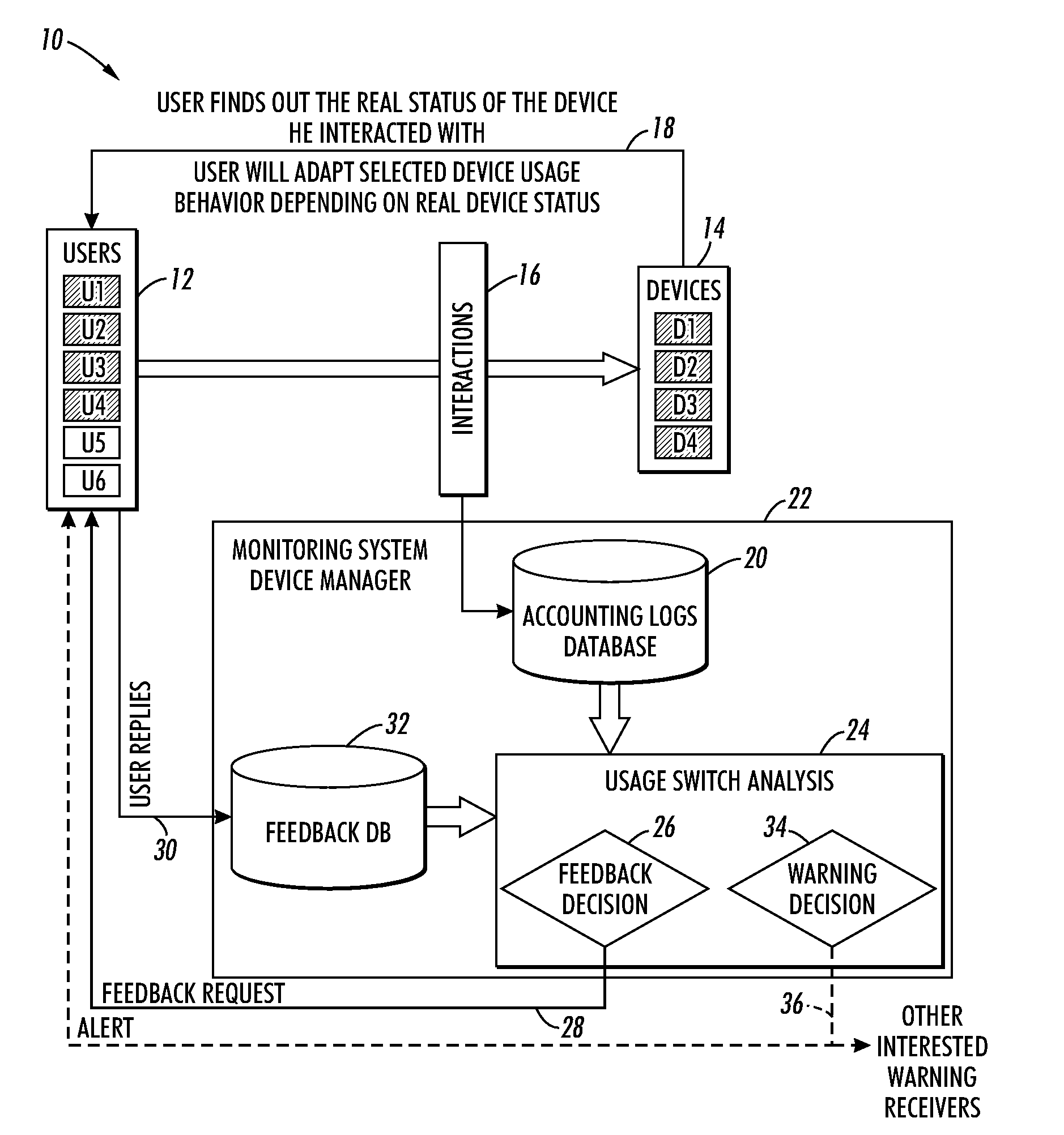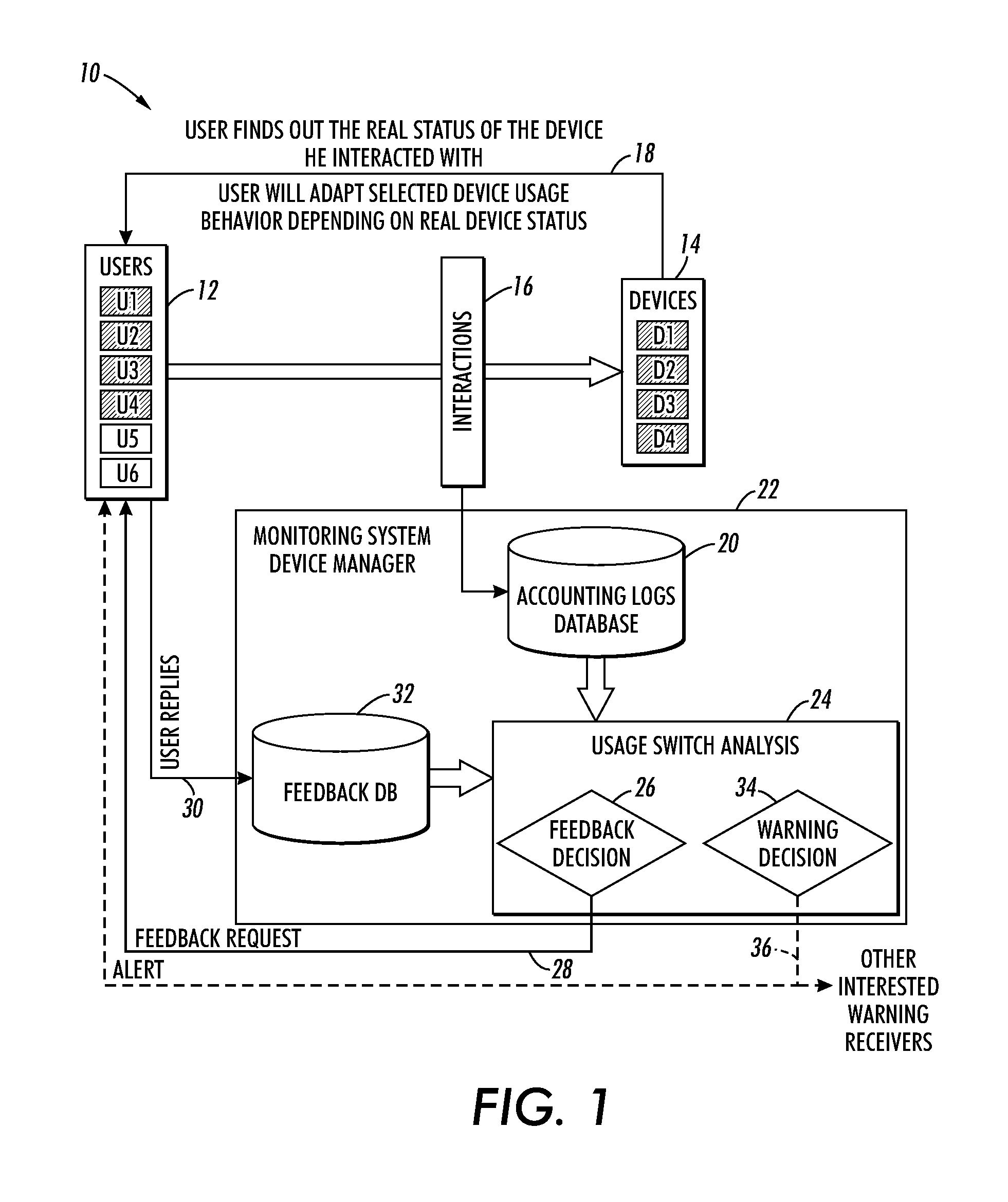System and method for improving failure detection using collective intelligence with end-user feedback
a technology of collective intelligence and failure detection, applied in the direction of digital output to print units, instruments, nuclear elements, etc., can solve the problems of paper jam, device based on sensor devices cannot guarantee that all incidents will be detected correctly, and the probabilistic approach to examining printer usage pattern changes cannot guarantee a perfect accuracy, etc., to facilitate overcoming and distinguishing
- Summary
- Abstract
- Description
- Claims
- Application Information
AI Technical Summary
Benefits of technology
Problems solved by technology
Method used
Image
Examples
Embodiment Construction
[0022]In accordance with various features described herein, systems and methods are described that facilitate using end-user feedback in order to automatically send users a request for details about a potential failure based on a detected change in their usage behavior, and adjust and tune the system so that the generative algorithm used in the soft failure detection (SFD) system gains specific knowledge of the environment and therefore becomes progressively more accurate. These aspects facilitate establishing a better link with the end user and improve the perceived level of quality of service while allowing the customer or user to selectively disable the feedback queries for input at any time.
[0023]With reference to FIG. 1, an SFD system 10 is illustrated that facilitates usage pattern analysis for device fleet monitoring by modeling and detecting changes in usage behaviors. The system improves the quality of service provided to users, which improves user satisfaction. “Soft” fail...
PUM
 Login to View More
Login to View More Abstract
Description
Claims
Application Information
 Login to View More
Login to View More - R&D
- Intellectual Property
- Life Sciences
- Materials
- Tech Scout
- Unparalleled Data Quality
- Higher Quality Content
- 60% Fewer Hallucinations
Browse by: Latest US Patents, China's latest patents, Technical Efficacy Thesaurus, Application Domain, Technology Topic, Popular Technical Reports.
© 2025 PatSnap. All rights reserved.Legal|Privacy policy|Modern Slavery Act Transparency Statement|Sitemap|About US| Contact US: help@patsnap.com



